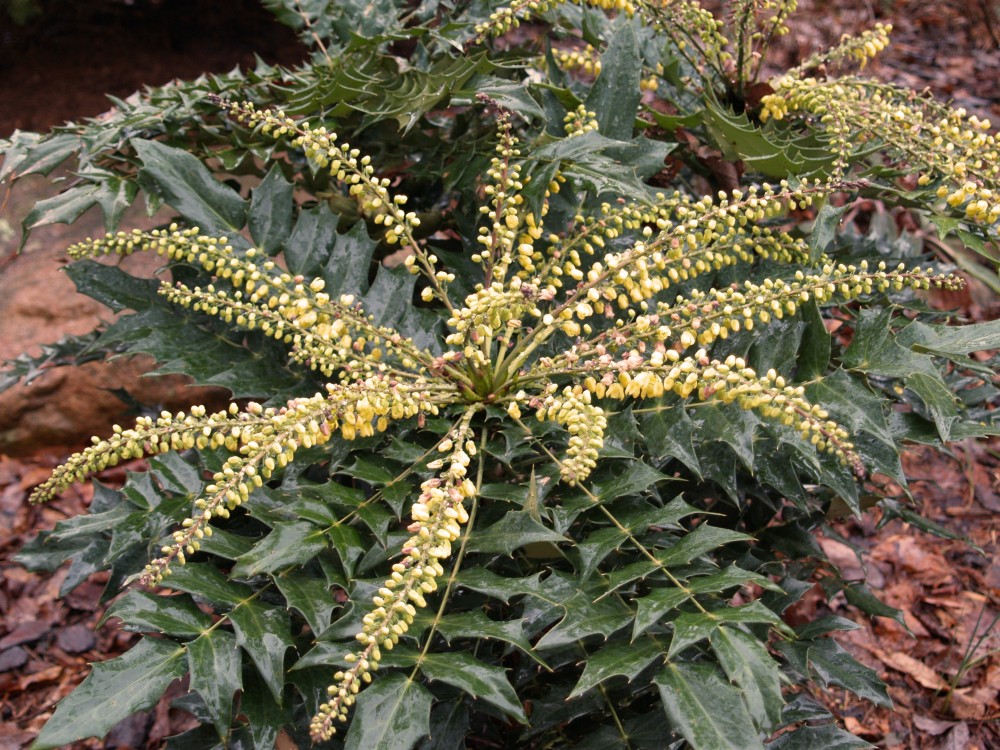A single stem of the Vernal witch hazel (Hamamelis vernalis, below) has begun to flower at the start of January, and though the blooms are small and not brightly colored, there is a satisfaction that the gardener has done something right to be rewarded with winter flowers. In fact, there is no particular skill in selecting plants that flower at one point or another through the winter months, and this witch hazel was not even intended to be one that would flower in January, but a month or two earlier.

As happens on occasion, this shrubby tree was incorrectly labeled in the nursery as the late autumn flowering American witch hazel (Hamamelis virginiana), the local native that is occasionally found at the forest’s edge and along partially sunny trails in the foothills of the Blue Ridge Mountains. With a young tree the more rounded form of the Vernal witch hazel is not so pronounced, so identification of one or the other is difficult until the small tree begins to bloom.

Or, in the case of vernalis and virginiana, when there are no flowers in November the gardener begins to wonder what’s up. In early January the mystery is solved, and he considers that this mistake could be his good fortune since there are other November flowers, and fewer through the winter months.

Today’s single flowering stem will soon be many, and even then the tree will be more easily identified from a distance by its scent than by the slightly colored flowers that can range from dull yellow to rust red on seedling grown trees. Now, there are plans to add one or two American witch hazels in spring (and possibly more) to fill the gap so there will be fragrant witch hazels flowering from November through March. This should satisfy any qualms that something is missing due to the mistaken identity. Hybrids ‘Jelena’ and ‘Diane’ (Hamamelis x intermedia) complete the late winter, though the marvelous, bright yellow flowered ‘Arnold Promise’ finally perished a year ago due to increasingly wet soil in the rear garden. It will be greatly missed.

In early January the most obvious blooms in the garden are from the winter flowering mahonias (Mahonia x media), ‘Winter Sun’ and ‘Charity’. These began flowering late in November, and often will persist late into January. If mid winter is particularly mild, early blooms of leatherleaf mahonia (Mahonia bealei) might overlap, though this occurs rarely enough that it is hardly worth a mention.

On warm and sunny afternoons in January a handful of bees might find their way to pollinate the mahonias, but since these days are few, the winter flowering mahonia rarely bear the small grape-like fruits that are more dependable on leatherleaf. The flowers are, of course, more notable than leatherleaf’s because there is little foliage in mid winter, and few other blooms.
